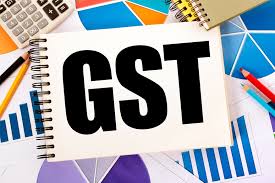GST compensation: States set to drive a hard bargain
Given that the comprehensive indirect tax in its current design has produced a huge revenue shortfall for states against the protected level under the GST (Compensation to States) Act, 2017, and both the Centre and states have suffered as a result in varying degrees, any extension of the aid will have to accompanied by a structural overhaul of the tax aimed at boosting revenues. The paradox is that the prevalence of the Covid-19 pandemic makes such a radical change, which effectively means a significant increase in the tax’s base and its weighted average rate, inopportune and tough.
A key question is whether the 14% annual growth under the current regime should be retained for the states in case the compensation period is extended; whether the growth is to be computed on the protected base or on actual State GST (S-GST) revenues collected in 2021-22 (July-June) or another base year is also integral to this question.
The Centre borrowed Rs 1.1 lakh crore under a special RBI window in 2020-21 and transferred the funds as back-to-back loans to states to make good their revenue shortfall; in the 43rd GST Council held on May 28, it proposed to borrow another Rs 1.58 lakh crore under the same mechanism in FY22, taking the total loan amount to `2.68 lakh crore.
States reckon that the actual shortfall during the five-years to June 2022 is much higher at Rs 3.9 lakh crore or thereabouts (Rs 1.8 lakh crore in FY21 and Rs 2.1 lakh crore in FY22). States have also suffered from the delays in release of the compensation amount – as per the Act, states’ loss of revenue requires to be compensated at the end of every two months, but this schedule hasn’t been strictly adhered to, forcing them to take loans.
While guarantee of 14% annual growth to states to is seen by many as ‘too generous’ – many states had historically seen lower revenue growth rates –, the states contend that that protection is perfectly legitimate given that GST forced states to concede more than half of their autonomous revenue base, while the central taxes subsumed in GST made up for less than 30% of its gross tax receipts.
“As GST revenue has not stabilized yet, and state finances are reeling under numerous stresses of Covid-19 uncertainties and natural calamities, I would also urge you to extend the compensation period for another five years beyond July, 2022,” West Bengal finance minister Amit Mitra wrote in a letter to union finance minister Nirmala Sitharaman last week. “We have suggested an extension in the GST compensation for 5 years,” Rajesh Kumar Singh, additional chief secretary (finance), Kerala government told FE.
Odisha has also sought an extension in compensation period beyond June next year. “We had asked for extension last year too, and that stand continues,” said Amar Patnaik, the state’s ruling Biju Janata Dal national spokesperson and a Rajya Sabha MP.
In the last GST Council meeting, Chhattisgarh, too, suggested that GST compensation be extended for another five years. The other option, the state, felt, was to allow states to impose a special cess on items/services manufactured/produced in their juridictions. “The Union government has to look after all the states which are losing out in the GST regime,” Chhattisgarh health minister TS Singh Deo, who represents the state in the GST Council, told FE. Tamil Nadu finance minister PTR Palanivel Thiagarajan told the GST Council on May 28: “… considering the long-term effects of the Covid-19 pandemic, it would also be appropriate to take a decision to extend the compensation arrangement beyond July 1, 2022.”
However, there are voices against the extension. Former Bihar deputy chief minister Sushil Kumar Modi, who was closely associated with formulation of GST laws and represented Bihar in the GST Council till October 2020, said, “I don’t think it will be practical to extend the guaranteed compensation further. Except in FY18, revenue collection was not enough to achieve annual growth of 14% in any other year. The average revenue growth of most states was 8-9% in pre-GST period and roughly, the rate has been same in the GST regime.” He added that it won’t be ‘feasible’ for the Centre to give states assurance of revenue growth for another five years. “It will take at least four years for the Centre to repay the loans (being taken for compensating states in FY21 and FY22) with interest. If the same assurance is extended, it will create a fresh liability. The cess collections won’t be enough to cover servicing of the existing debt (FY21 and FY22) and to give fresh compensations,” Modi noted.
“The introduction of the GST on July 1, 2017, with an assured revenue growth of 14% for the states for five years, injected an element of uncertainty in the financial flows of the union government,” the 15th Finance Commission said in its report.
However, the basic issue is the structural infirmities of GST as introduced in July 2017. Auto fuels, alcohol for human consumption and assorted other items were kept out of the regime. While weighted average rate was significantly below the revenue neutral rate estimated of 15.3% to start with, a series of rate cuts by the GST Council, including those aimed at boosting consumption and faltering economic growth, and the failure in plugging revenue leakages, widened the gap. The weighted average GST rate at present is seen at around 11.5%.
Download our App to get knowledge updates:: https://play.google.com/store/apps/details?id=com.app.gstmitraa
Join Our Telegram Channel for more updates: https://t.me/praveengst



Comments
Post a Comment